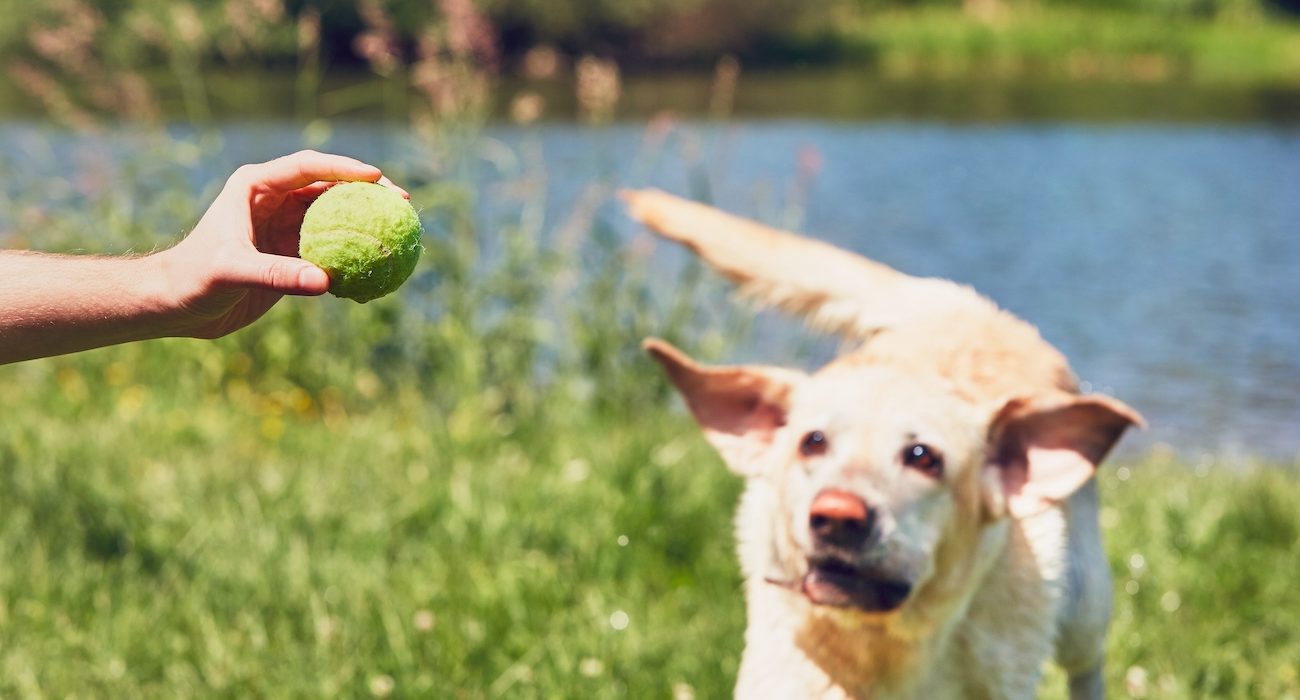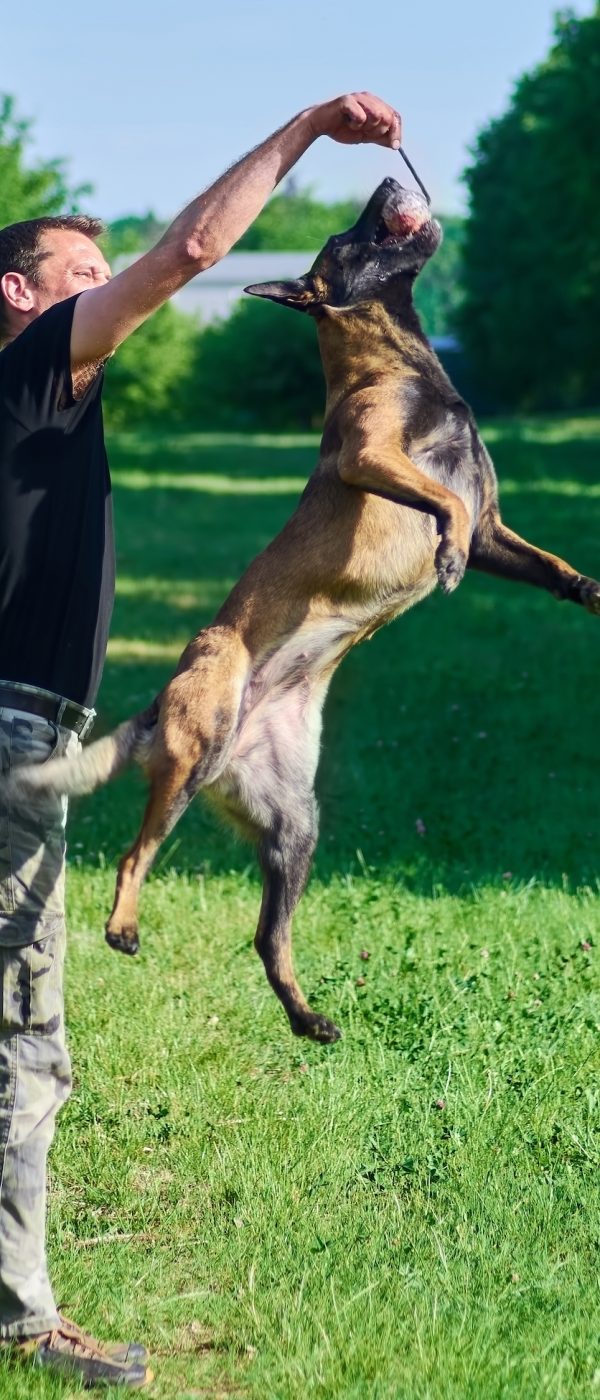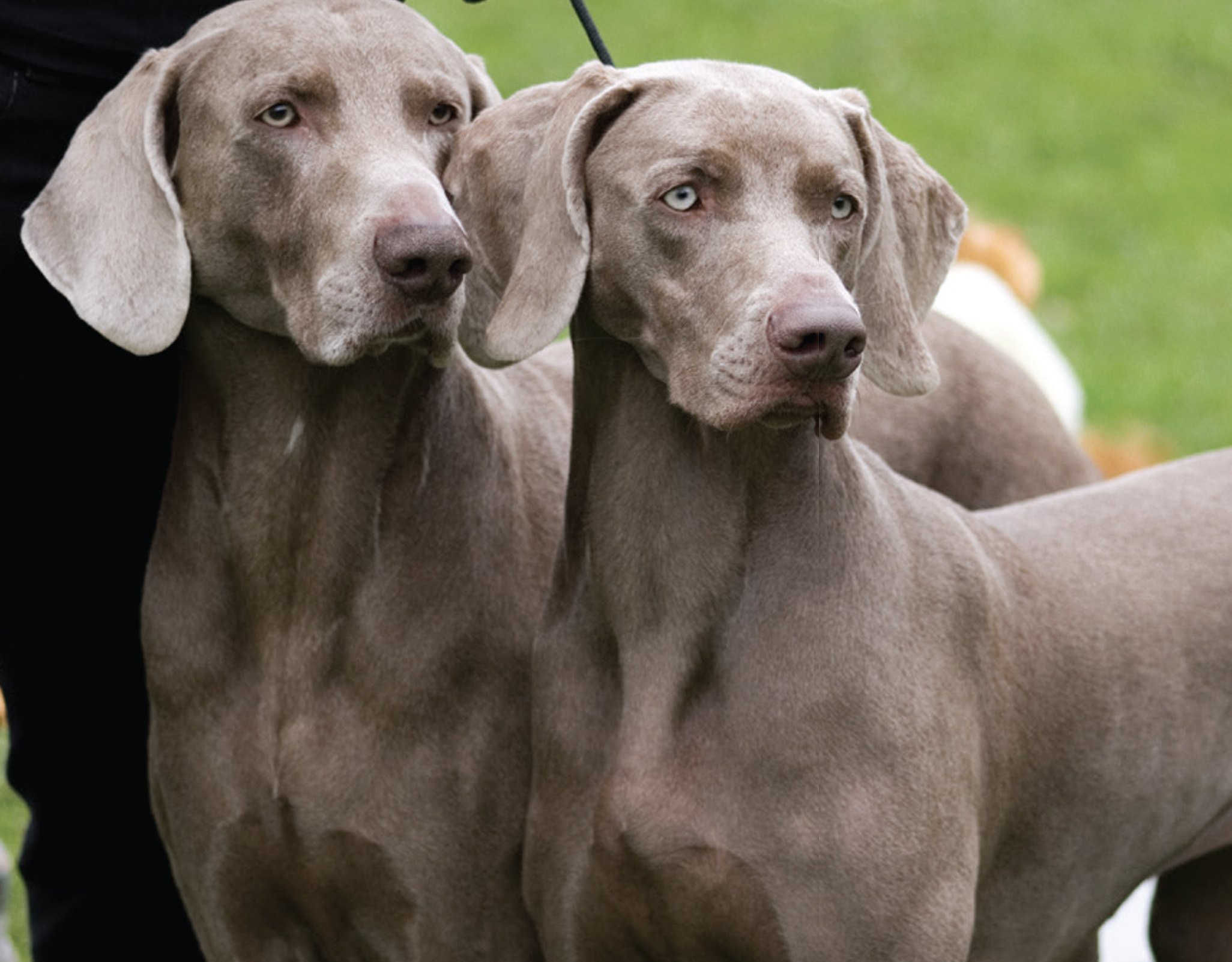
Unraveled: Summit Professional Services
The interview for this article of The Dog Journal is with Joe Miller, CEO and founder of his company Summit Professional Services.
A dog sport where two teams of four dogs each will race from start to finish against each other over multiple hurdles to get to a box that releases a tennis ball. The dog will press a spring-loaded pad that allows the tennis ball to be released in which then the dog will catch it and return back to its handlers jumping over the hurdles once more throughout their return. The following dog on the team isn’t allowed to cross the start line until their fellow teammate has crossed the start and finish line. Whichever team has all four dogs to return first wins the race! The smallest dog on the team is always considered the “height dog” and they use this dog to determine the height needed for the jump height.
Flyball got its start in the late 1960s and 70s. It all began when a group of dog trainers in South Carolina put together hurdle races that involved scent discrimination and at the end of the track was a guy that would throw tennis balls to each dog. For those who don’t know, scent discrimination is a training method that lets dogs choose an object based on the scent you want them to choose, typically the owner’s scent. Shortly after the group started having these races, they decided to build a ball-launching machine to eliminate the need for someone standing at the end waiting to throw the ball. This is when the first flyball box was created by Herbert Wagner. Herbert went on to showcase his flyball box invention on the tonight show with Johnny Carson. This peaked the interests of many dog enthusiasts in the Toronto- Detroit area for dog training clubs and eventually brought on some of the first small tournaments held in conjunction with dog shows while the first official tournament was held in 1983.
The first rulebook for NAFA was written in 1985 by a guy named Mike Randall who also became the executive director. NAFA also known as the North American Flyball Association, is a non-profit organization that revolves around, you guessed it, Flyball.
Of course, with electronics becoming more and more of our daily life, they have had an impact on flyball races as well. When they first started, there was simply a judge that would say “ready, set, go” and then blow a whistle for the first set of dogs to take off. They used stopwatches to time the dogs and there wasn’t any such thing as lights being on the track. In this day and time, the flyball races include an EJS (Electronic judging system). It uses lights and infrared timing sensors where competitors can track everything about the race including, starts, passes, finishes, and times for each individual dog.
It is said that many teams complete the entire race in less than 20 seconds with the world record being 15.22 seconds. NAFA puts on more than 300 tournaments a year across North America and they divide into divisions so that each team is able to compete against other teams with equal abilities.
Hard Drive started 14 years ago in 2008 and 8 of the members used to be part of another team until they decided to create their very own flyball team in order to run things the way they saw fit. One of the 8 team members had started flyball back in 2000 with a rescue Golden Retriever. Her husband eventually joined in and in 2010 they began training with the OPR team

Another member on this team became interested in flyball about 19 years ago from going to a pet expo and seeing a race for herself. She thought that it looked like so much fun and knew that her dog could probably do the same thing and would enjoy it. Since then, they have all been enjoying flyball with their dogs, and the fun that comes with it.
They say you must have 6-8 people to have a fully staffed flyball team. Each team has a minimum of 4 dogs on the roster. A full team will have a total of 6 dogs, including two backup dogs should any competitors get injured.
Tournaments typically have 4 heats per race, and 4 to 5 races per day and can equate to 30 to 40 races throughout the entire weekend. This completely depends upon how many dogs each human has and can sometimes end up being more or fewer races with that factor. Breeding a genetically dependable dog is the leading way to have proper flyball dog competitors. Of course, there is training but each dog needs to be bred specifically to be able to handle long runs and the agility of it all, otherwise, the training will be harder or even useless. The dog should have optimal health overall including their joint makeup and their weight. While higher competing dogs should be bred to a certain standard, any dog and their human can play flyball. The dog may not run as fast but just the fun of it can be reason enough to join but it is good to know that this sport is high intensity and the dogs run at a very high speed which can lead to a dog being harmed, especially if they are not in the best health or trained properly. The thing about flyball races is that it has nothing to do with the ball or the race itself but more so about the reward the dog will get at the end. There can be many types of rewards depending on that particular dog and what reward they love the most.
Because of the intensity of the sport, they are trying to improve the safety of the challenge as a whole. They do this by making the jumps wider and doing other things to improve the flyball course. This is imperative because as time goes on, dogs are being trained to run faster and faster. For example, one of the fastest teams would originally run at 16 seconds and now they complete the run in 14 seconds.
The course is 52 feet down and 52 feet back, the dogs do 4 jumps one way and 4 jumps back equaling to a total of 8 jumps and some of the dogs run so fast that they can finish the entire run in 3.4 seconds. Training the dogs that compete also consists of teaching them how to do the quick “swimmers turn” and how to grab the ball as soon as it is released by stepping on the pad. They can’t wait to catch the ball; the dog must be ready to actually grab it. The swimmer’s turn is taught in order to keep the dog safe and to help their speed. That way when they hit that pad at the end of the track, they don’t slam into it but rather make the quick turnaround. If a dog doesn’t have a smooth turn, it could increase the time they take to complete the race.
According to the members on this team, there are two goals when you are racing, to complete and get a certain number of points which can lead to different titles, and the second goal is to be the fastest team. Some teams just want to have fun, get the points, and win the titles while the other teams are more focused on speed and being faster than the rest. The points are given in a certain bracket so while you want the dog to run fast, you don’t want them to run too fast.
Of course, if you run in the top divisions and your dog ends up running faster than you thought it could, that is still great, but you will still originally be seeded with the other teams of the speed you provided.
Amongst the biggest flyball competitions, there are two of them. One of them is under the governing body of NAFA called “CanAm” which takes place the second week of October in Indianapolis and 2022 will make the 12th year of them having this competition. The other is under the governing body of U-Fli and is called “Tournament of the Champions” which takes place in St. Louis. This tournament typically takes place in late October. Though there isn’t any sort of requirement to reach these big tournaments, you must have at least run in two tournaments previously before competing in the U-Fli competition. With these competitions, the Saturday that your dog runs are for them to qualify and have their speed recorded. That following Sunday your dog will be placed to race with other dogs matching up to their speed and then must put in their best effort to win the race. The best type of dog for this type of sport is a small but fast dog. They don’t need to be too small otherwise they will be too slow but a smaller breed with speed is the best option. On top of that, the dog will have to have a good temperament, good work ethic, and things of that sort. Many people will typically breed dogs of different stature and traits to create the dog they are wanting for these races. Those dogs include breeds such as Whippets, Border Collies, and more.
Hard Drive raced in the Tournament of the Champions, ran in the “champs” competition four years ago (2018) and was able to come home as the 6th division championship team. These divisions are determined by how fast the team completes the race. There isn’t any prize money for the win, but the bragging rights make for a great win!

Besides being a fun, competitive sport for humans and their dogs, this team states that the social aspect is a plus to flyball as well. Compared to other sports, flyball has a great community of people, and they are able to meet lots of new people who become friends. This sport is one of the only dog sports that have teams. In any other dog sport such as agility, is that it would be one human and one dog but with flyball, there are multiple dogs and multiple humans that are a part of the entire process. These races seem to help dogs to be used to more people and being around other dogs.
The first step in training a dog for flyball is what they call “recalls”. The dog learns to run to you for whatever the reward is when you call for it. After that you build from there, teaching them how to do the swimmers turn, teaching them to run away from you, and grabbing the ball. Teaching the dog to run in the opposite direction of you is sometimes the hardest part of training. One of the biggest downfalls to flyball is the time commitment you must put into training the dog on top of the tournaments that they compete in. Training sessions should be done at least 3 times a week, they can be short sessions but working with them at home is a key part of the learning process. Finding a good location for practicing is work in itself. To practice, the dog needs a long, narrow path to run down and back, mimicking how the actual competition will be set up. That means that even the equipment will have to be placed throughout the path. The big mats, the jump hurdles, the boxes, the jump aids that are used to train the dogs and all that has to be packed and placed for practices. This can be a hassle and must be taken into consideration when looking for a place to practice. During training, learning how to pass at top speeds is just as important, if not more, than the rest. This teaches them how to maneuver without running into the other dogs. This can mostly come to them naturally because they will know to get out of the way instinctually but passing drills such as these are a big part of training. You would start with wider length passes and as they learn, you would make the pass in a narrower path.
Proper nutrition is a big aspect for dogs in this sport. Providing them with joint supplements, other vitamins, raw food, and high-quality nutritional foods are a must for all dogs but especially those who are in sports such as flyball. Many times, teams will be sponsored by particular pet brands. Hard Drive Flyball Team is currently sponsored by Juru Industries.
Going forward, Hard Drive would love to see more people joining and the governing bodies making it easier for new people to get into flyball. This team goes to different pet expos and things of that sort which is a great way to get other people interested and can be a great way for people who are unfamiliar with the sport to see it firsthand.
There is a story of “Sasha” a Border Collie that ended up joining flyball. The owners stated that when they brought her into their home, she was super shy and would get scared of everything, especially loud noises. The Owners even attempted to take her to obedience classes, but nothing seemed to work on their sweet Sasha. It got to a point where they couldn’t take her anywhere at all without Sasha getting scared and causing an uproar. They knew she LOVED playing fetch and chasing after her ball and right when Sasha’s owners were at their wit’s end, they came across flyball. Once they saw the flyball sport and what it was all about they couldn’t help but wonder if this could be something to boost Sasha’s confidence and change the game for her. They quickly approached a local flyball team and explained the situation. The flyball team was pleased to invite them to a training session and was patient throughout the entire process. They made sure to keep everyone and their dogs away from Sasha as much as possible other than when they had to handle her during the run-back training. Though at first, she was scared when the trainer was near her, this shy Border Collie soon became one of the team. Despite her fear of loud noises, Sasha doesn’t seem to mind anymore during the flyball competitions. She has found a sport she loves, a sport that keeps her busy, and flyball has helped her to overcome the fears and anxieties she once couldn’t handle.
Flyball is a fairly popular dog sport around the world but there are still many people who have not been introduced to such a thing. It is a great way for dogs and their owners to bond and have fun in the meantime. It also helps dogs physically, mentally, and temperamentally as they learn and compete in many competitions with other dogs.

The interview for this article of The Dog Journal is with Joe Miller, CEO and founder of his company Summit Professional Services.

I go back to the question, what problem are you trying to solve. When I think about what I want my website to accomplish, I think of a few things.

The Dog Journal Panel Discussion: Being Breed Specific Only one breed of dogs? Really? Why would someone do that? Let me ask “Why Not”? The